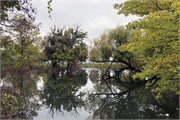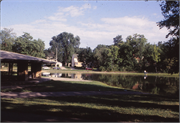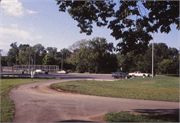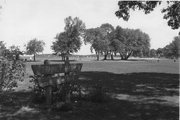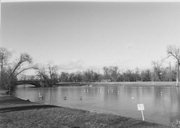| Additional Information: | A 'site file' exists for this property. It contains additional information such as correspondence, newspaper clippings, or historical information. It is a public record and may be viewed in person at the Wisconsin Historical Society, State Historic Preservation Office.
Madison Historic Landmark: 7/10/1995.
Tenney Park was the city’s first large urban park, for which development began in 1900. It originated with the Madison Parks and Pleasure Drive Association, which purchased a marshy area at the mouth of the Yahara River. The park expresses the ideals of the noted Chicago landscape architect O. C. Simonds, a pioneer in promulgating a new Prairie School landscape aesthetic. Simonds arranged native plants and local landscape features in a naturalistic and picturesque manner. The serpentine lagoon symbolized prairie rivers, and the island meadow represented the prairie landscape. Visitors were supposed to come to the park to admire nature from a path or a boat, but the passive aesthetic experience that Simonds envisioned appealed to few Madisonians. Consequently, in 1908, John Nolen, a prominent landscape architect from Cambridge, Massachusetts, was hired to design areas for more active recreation such as swimming and band concerts. Nolen also refashioned the lagoon’s series of islands into a single ten-acre island.
City of Madison, Wisconsin Underrepresented Communities Historic Resource Survey Report:
Despite forced removal and resettlement, many Ho-Chunk remained or returned to the area around the four lakes that is now the City of Madison and the surrounding area. Small settlements and camps were maintained from the 1840s to the 1920s without any formal title or deed to the land that the native people settled. The general locations of many of these settlements are known, but not precisely as there are no extant above-ground buildings and structures. However, it is highly likely that belowground archeological resources remain. To preserve the archeological remains, the exact locations are not publicized. All these settlements were likely small in scale and located near water and are also often close to mound groups. The archeological potential of these sites remains unassessed.
A Ho-Chunk settlement existed in what is now Tenney Park, located at 1440 E. Johnson Street, along the south shore of Lake Mendota near the mouth of the Yahara River. This settlement existed from the 1830s, or likely earlier, to the 1880s. Tenney Park, covering 14 acres, was purchased by the Madison Park and Pleasure Drive Association in 1899 for a public park. The park is already designated as a City of Madison Landmark. The park is listed as a contributing resource to the Tenney Park--Yahara River Parkway in the National Register of Historic Places in 1999. Consideration should be given to updating the designations to reflect its significance in the history of the First Nations community. |
|---|

